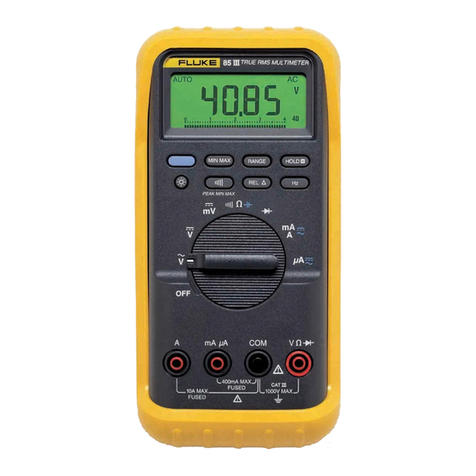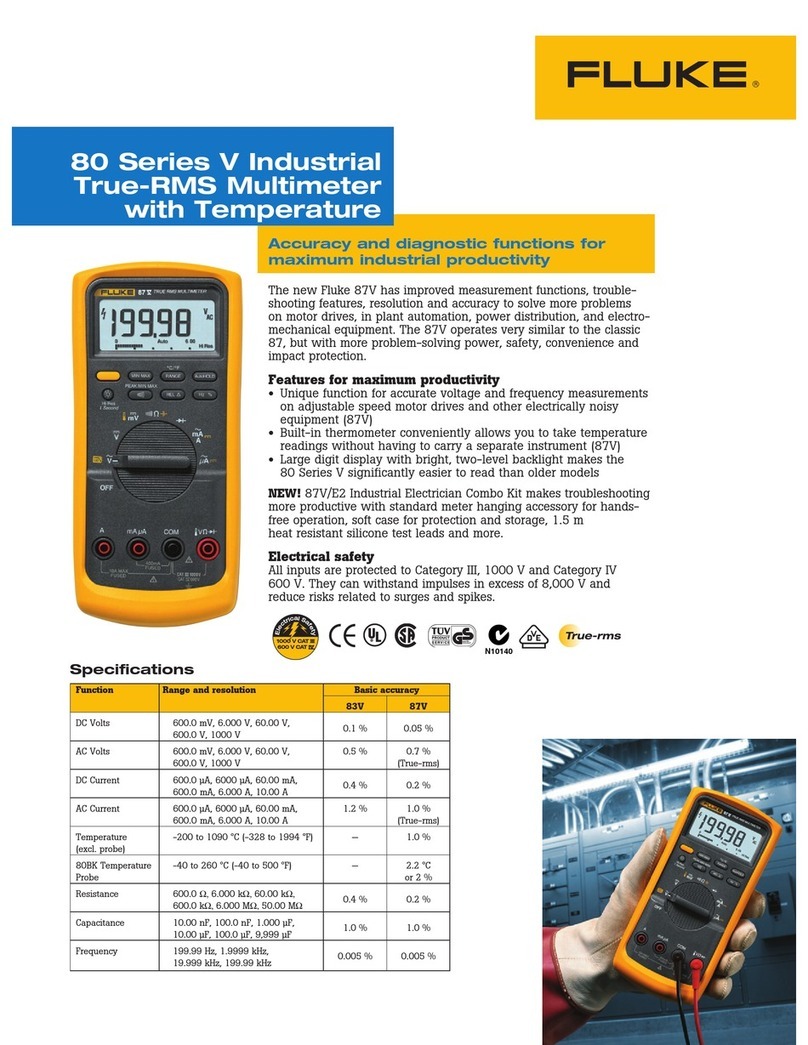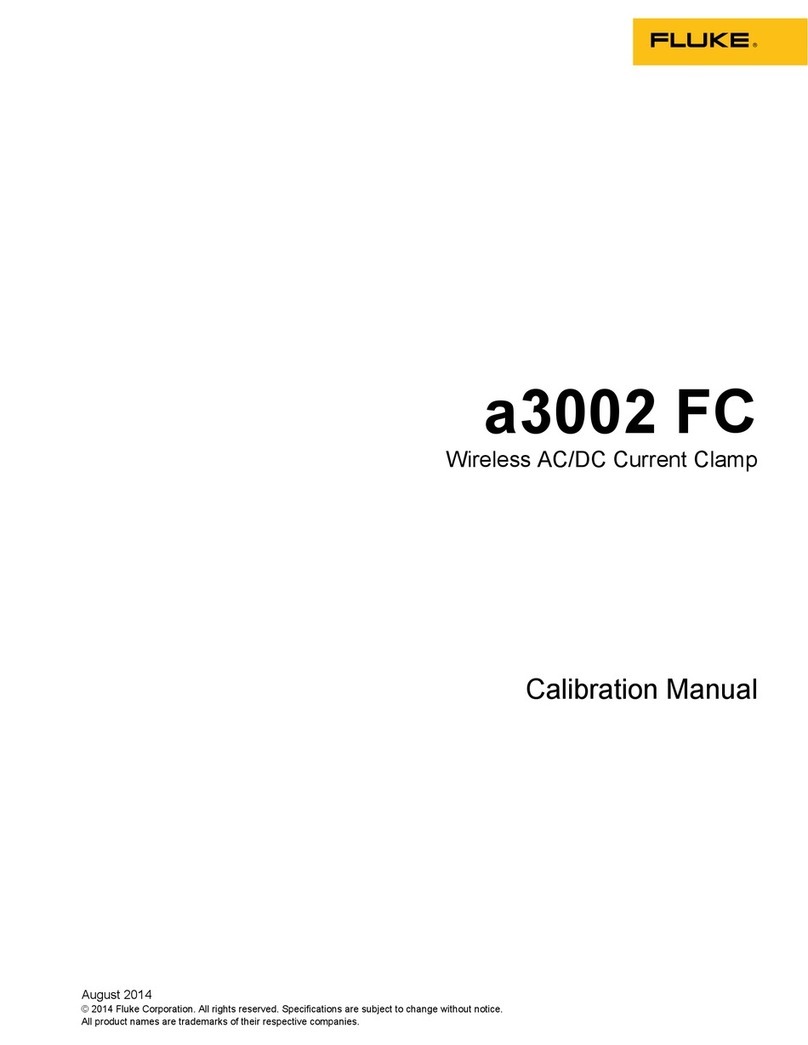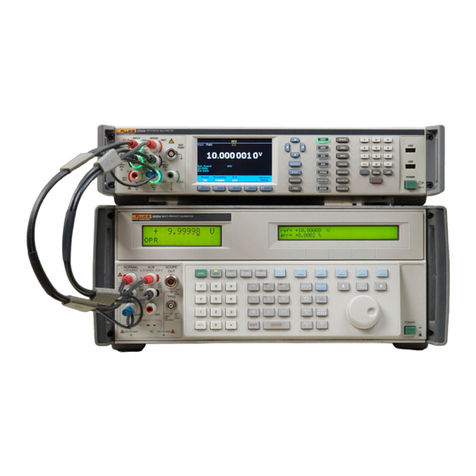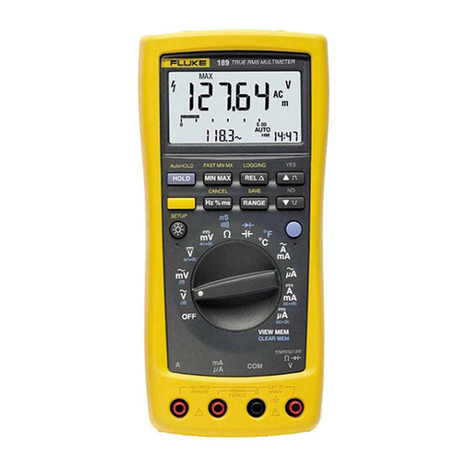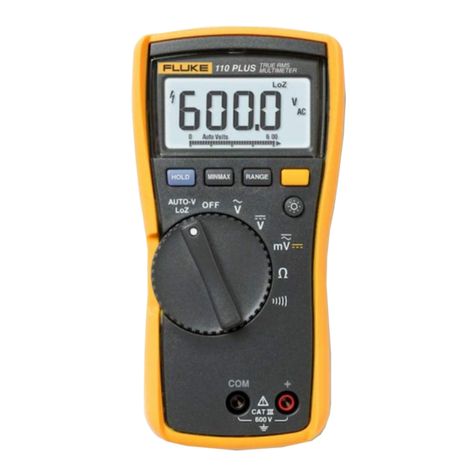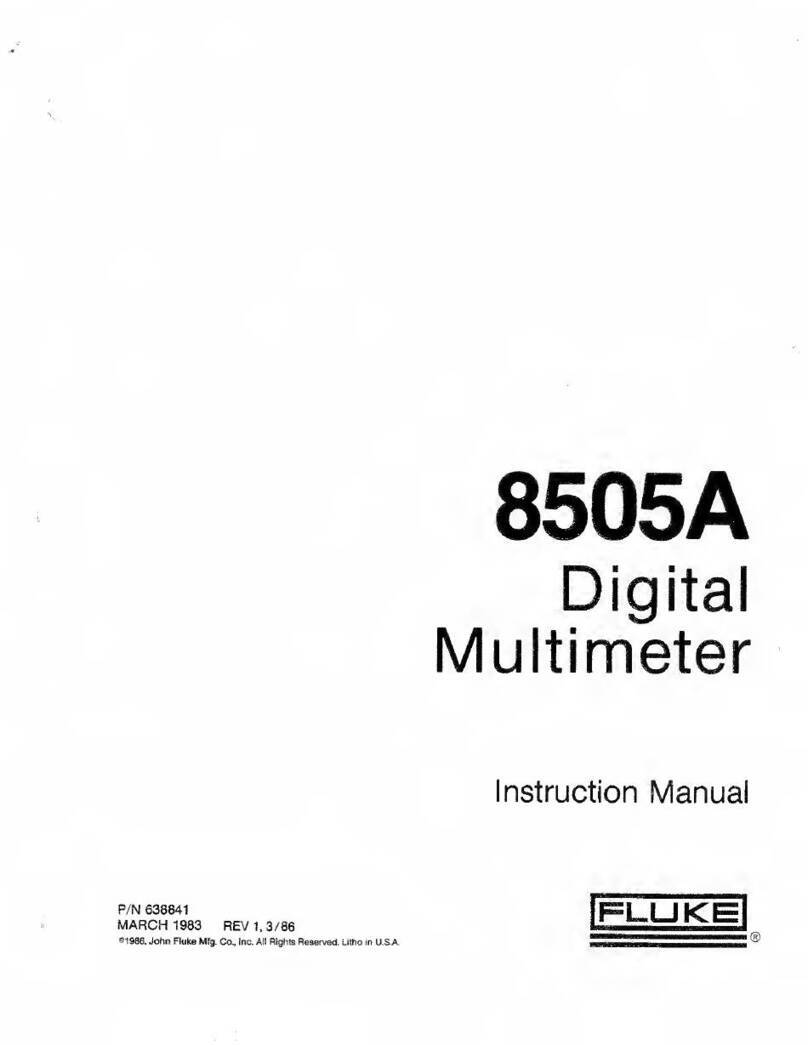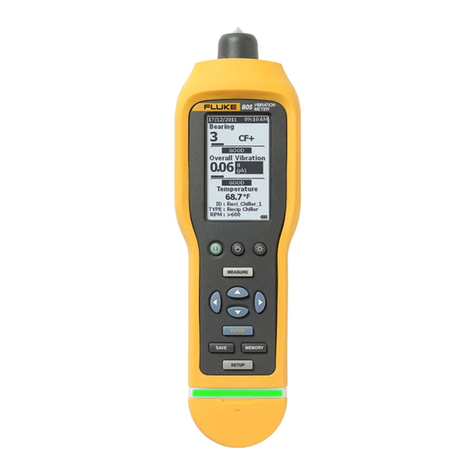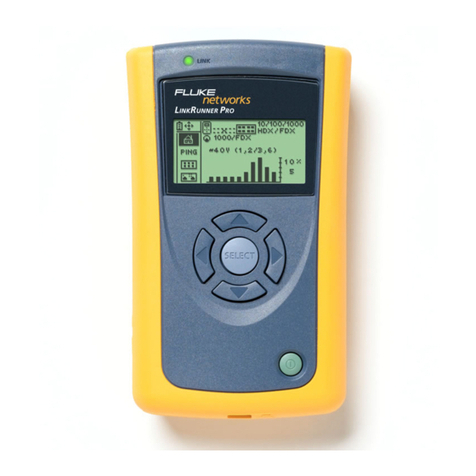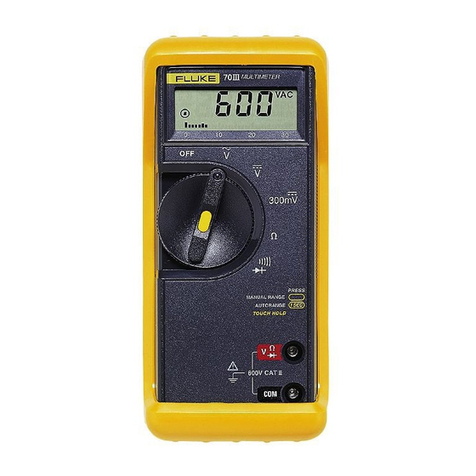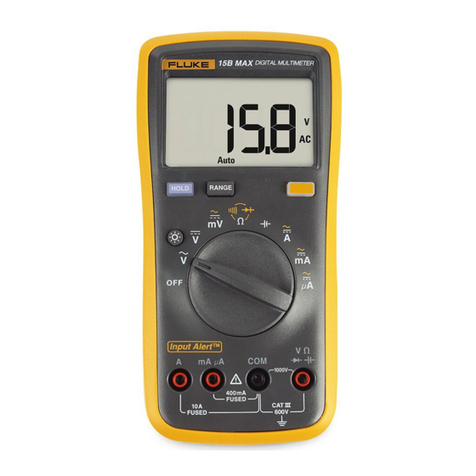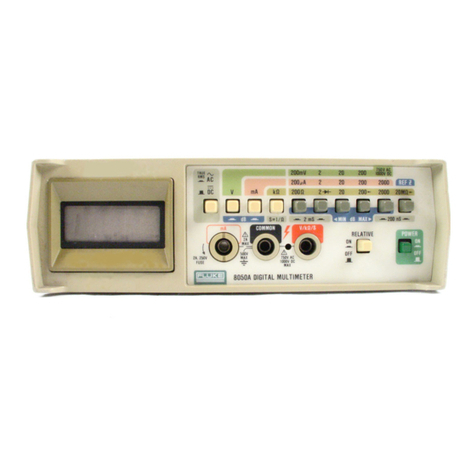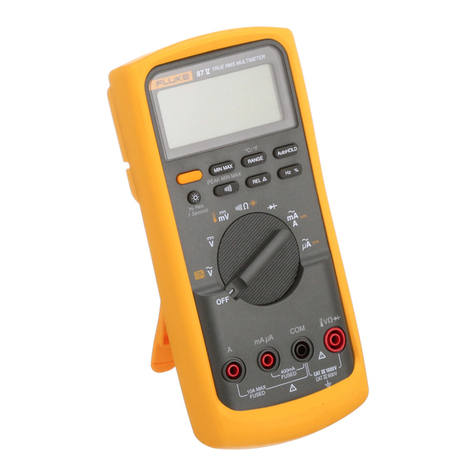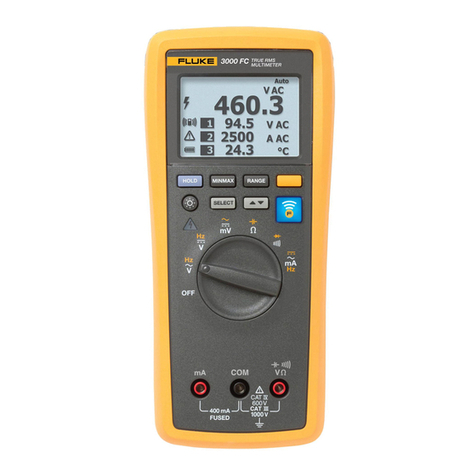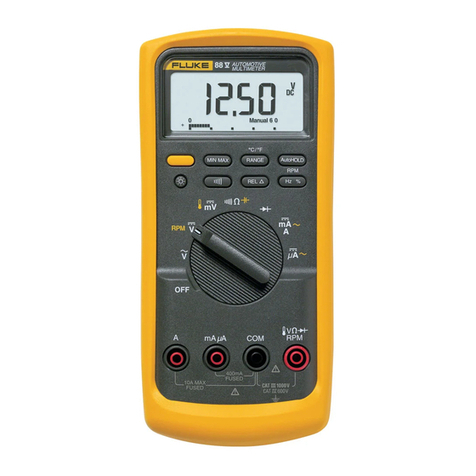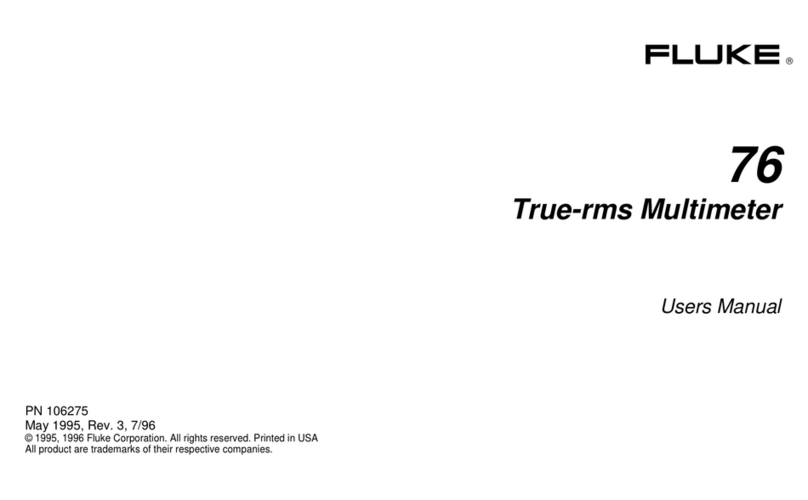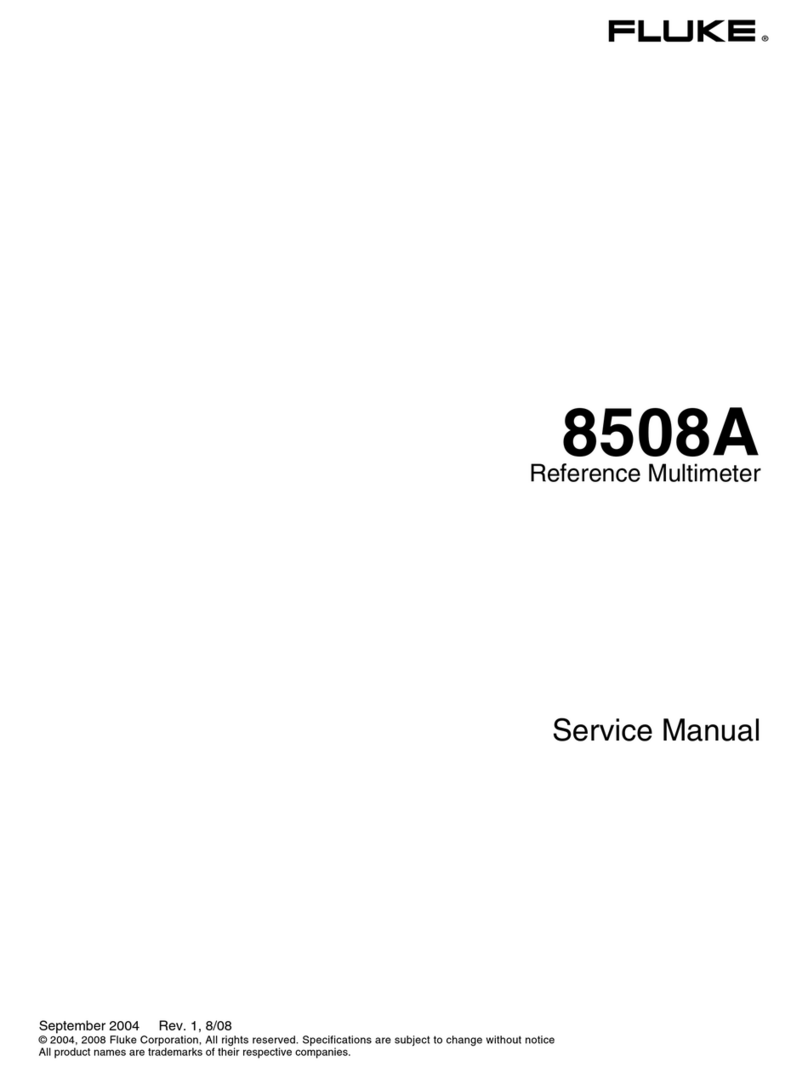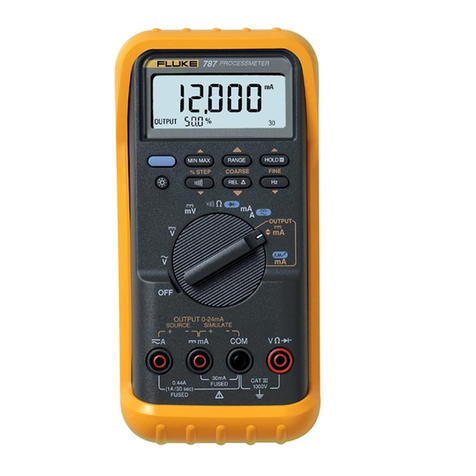Section
1
Introduction
&
Specifications
1
-
1. INTRODUCTION
1
-
2. The Fluke Model 8020A is a portable 3%
-
digit,
pocket
-
sized multimeter that is ideally suited for field,
lab, shop, bench, or homeapplications. It weighsinatan
impressive369 grams (13 ounces) with battery,and packs
more measurement power than the heavy
-
weights.
Here's a review of some of the features that qualify the
8020A as a real pro:
All VOM functions plus the versatile conductance
function (six in all) are included as standard.
DC Voltage
-
100 pV to lOOOV
AC Voltage
-
100 pV to 750V
DC Current
-
1 pA to 2000 mA
AC Current
-
1 pA to 2000 mA
Resistance
-
0.1R to 20 MR
Conductance
-
0.1 nS to 200 nSand .001 mS to 2 mS
(S
=
siemens
=
1
/
R).
CONDUCTANCE!! A new multimeter function that
allows fast, accurate, noise free resistance measure
-
ments up to 10,000 MR.
Line operation is possible using a Model A81 Battery
Eliminator (See Section 6, accessories).
Effective overload and transient protection on all
ranges.
overrange indication on each range.
Long term calibration (1 year) is achieved by using
high stability components, and minimizing adjustments
(three total).
Full auto
-
polarity operation.
Dual slope integration toensure fast, accurate, noise
free measurements.
A complete line of range extending accessories is
available.
1-3. PREPARING FOR OPERATION
1
-
4. Unpacking
1
-
5. When received, the 8020A shipping carton
The
latest IC
and
is
used
to
should contain the items listed below. Account for, and
achieve the lowest possible component count. This, in
inspect
each
item
before the
is
discarded.
In
the
turn, ensures reliability, accuracy, stability and a really event of a damaged instrument, contact your nearest
rugged, easy
-
to
-
handle instrument. John Fluke Service Center as listed at the rear of this
Up to 200 hours of continuous operation can be
expected from a single, inexpensive, 9V, alkaline battery
(transitor radio/calculator type).
Low battery voltage automatically detected and
displayed.
No needles to bend. No parallax and no zero adjust.
Just a high contrast, easy
-
to
-
read, 3-112 digit, liquid
crystal display.
manual. Please retain. and use the shipping container if
reshipment is required.
Contents:
1
-
Model 8020A Multimeter
1
-
Model 8020A Instruction Manual
1
-
9V Battery
1
-
Set of Test Leads (red and black)
1
-
8020A Operator's Guide (plastic card)
X
-
Accessories as ordered

